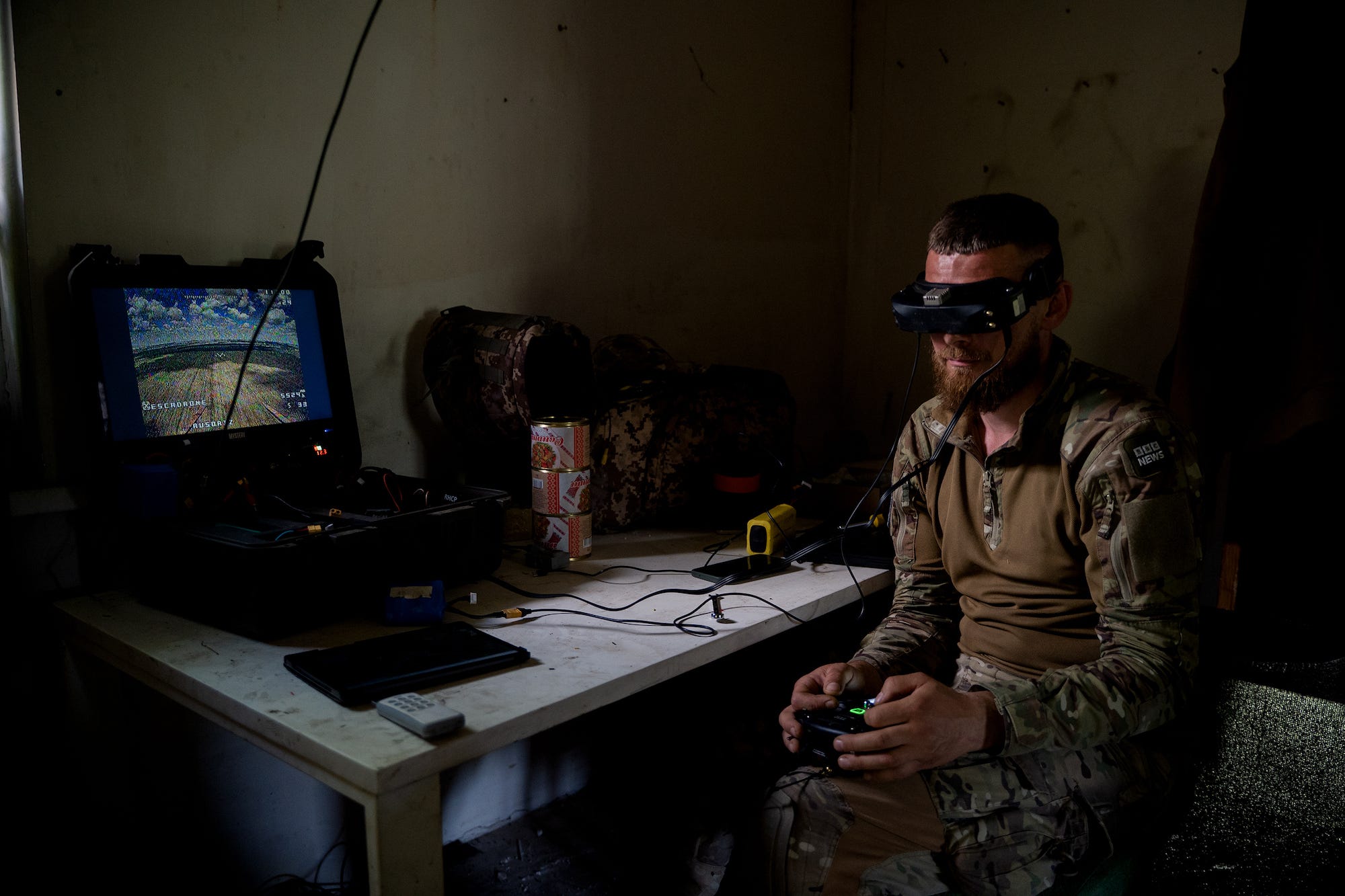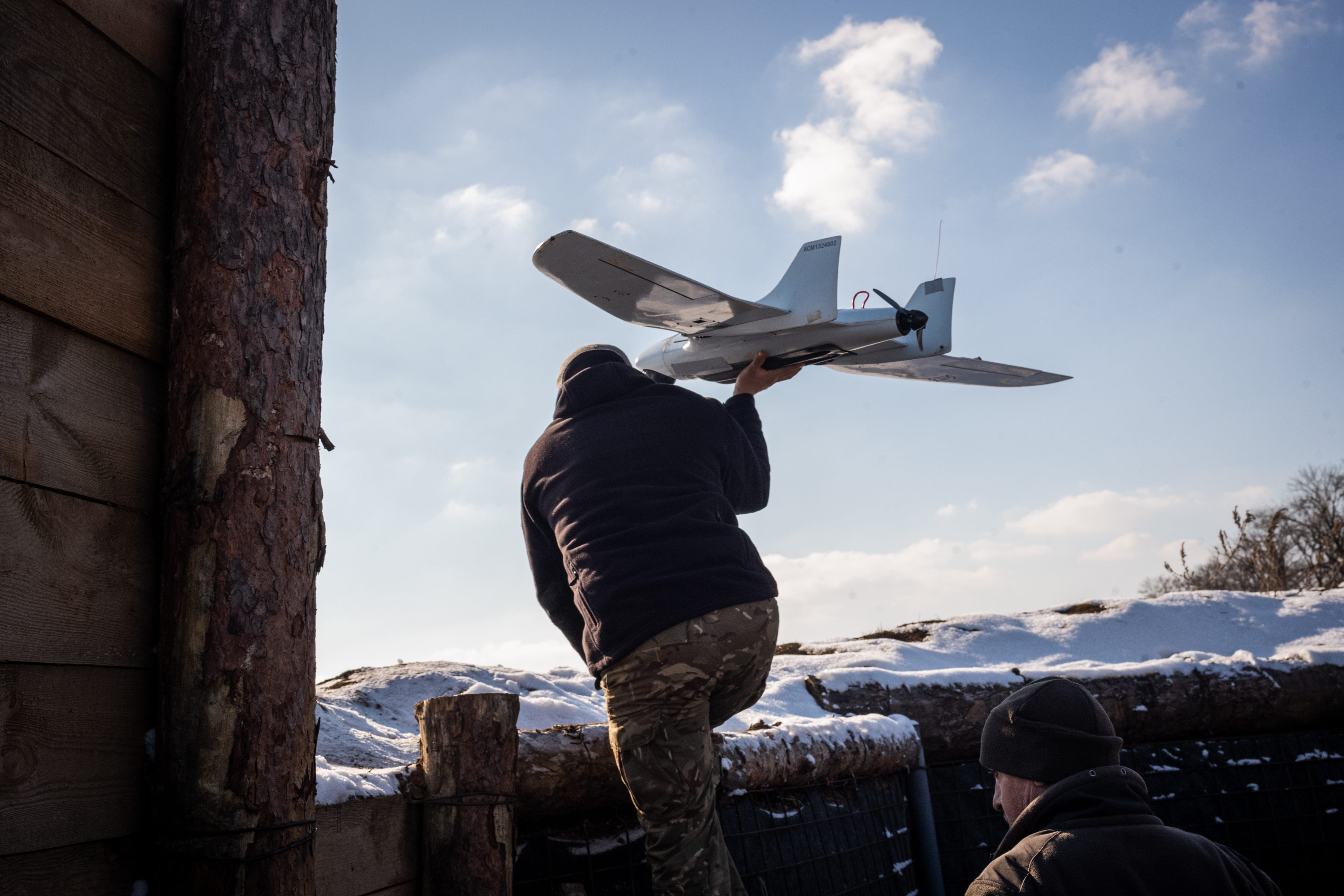
REUTERS/Sofiia Gatilova
Ukrainian drone operators flying their uncrewed aircraft against the threat of Russian jamming are often unsure where their drones actually are, meaning they have to use other guideposts to find their way, an operator told Business Insider.
Directional landmarks can include “weird-looking buildings” or intersections. Operators use these when they can’t use GPS to locate themselves and can’t be sure exactly where their drones are over fields and treelines that look similar, Dimko Zhluktenko, a drone operator with Ukraine’s Unmanned Systems Forces, told BI.
Drones warfare is a major part of Russia’s war against Ukraine, and both sides are rapidly creating and developing new types of drones and counter-drone technology. The countermeasures include electronic warfare like jamming, which can target connections between the drone and its operator or the aircraft’s GPS navigation system.

Tanya Dzafarowa/Suspilne Ukraine/JSC “UA:PBC”/Global Images Ukraine via Getty Images
GPS, a satellite-based navigation system, is used in munitions, drones, and civilian technology like digital maps. It plays an essential function in military systems and civilian society, but military leaders are increasingly coming to terms with the reality that modern battlefields may be GPS-denied environments.
Weapons that rely on GPS, including sophisticated US weapons, have run into problems on Ukrainian battlefields.
“At the front line, there is literally no GPS,” Zhluktenko said. “So a key issue is that when you’re flying with no GPS, the drone thinks that he’s in one position while, in fact, he’s in completely another position.”
Electronic warfare can make location data unreliable, and wind and other factors can knock a drone off course, out of sync with the operator’s expectations.
Without GPS, operators have to look at what their drone’s camera is showing them and compare it to satellite imagery and maps to figure out where it is.
“And that’s why you have to look at the visual markers that you have from the camera: a lake, some weird-looking building, weird intersection, and you just discuss all those markers and use them to navigate through the front line basically.”
“The operator, he’s looking at the camera, looking at the map, and figuring out where the drone is and where to go next,” he said. That’s not an easy task, and in some sectors of the front, this can be extremely difficult.
Eastern Ukraine, where most of the fighting is taking place, is very flat and has a largely uniform landscape, making it hard for operators to find those standout features and learn where they are.
Zhluktenko said that in the east of the country, “one of the key issues is that all of those places, they look exactly the same. It’s the same kind of field, the same kind of forest, and there are literally no visual markers to figure out where you’re at.”
The flat landscape has also made other parts of warfare more difficult, like tank and armored assaults. Drones can see them coming from far off.

Wolfgang Schwan/Anadolu via Getty Images
Another Ukrainian drone operator, who spoke to BI on the condition of anonymity, shared similar experiences, explaining that without GPS, drone operators “have to get oriented using benchmarks.” They said that those can include “a building or a lake or a river or some house.”
Drones have been used in this war more than in any other war throughout history. From quadcopters to octocopters to large fixed-wing aircraft, drones are running reconnaissance operations, collecting targeting data, dropping bombs, and exploding on targets, and that’s just the aerial ones.
These relatively cheap weapons have eliminated assets worth millions of dollars and destroyed targets far from the front. They’re radically changing warfare.
And they have been key for Ukraine, which has suffered from shortages of other weaponry. Maj. Gen. Peter Boysen, the commander in chief in Denmark, a significant Ukrainian partner, said this month that attack drones account for more than 70% of Ukrainian kills.
The proliferation of drones means that Russian and Ukrainian industries are in a race to find ways to jam and stop the other country’s drones. They are also developing new drones that are resistant to or able to overcome those efforts.
New drone systems include fiber-optic drones, which have a cable between the operator and the drone that prevents them from being jammed, and AI-enabled drones.
The post Ukrainian drone pilots often use ‘weird-looking buildings’ as guides to fly their drones through heavy Russian GPS jamming appeared first on Business Insider.




